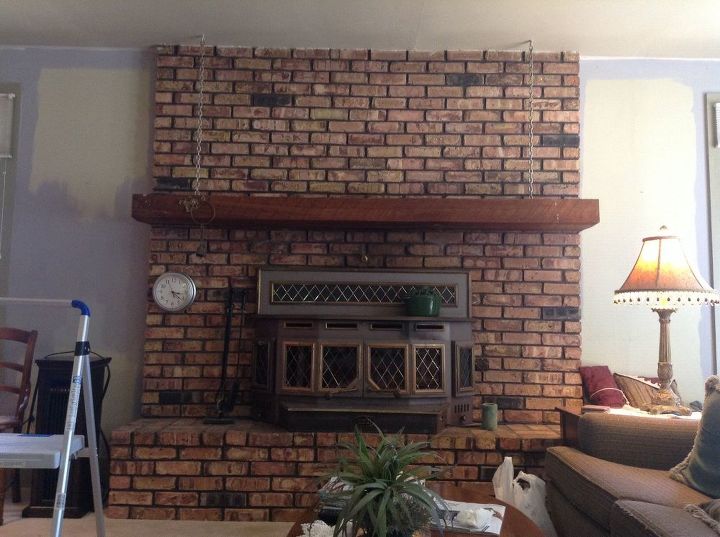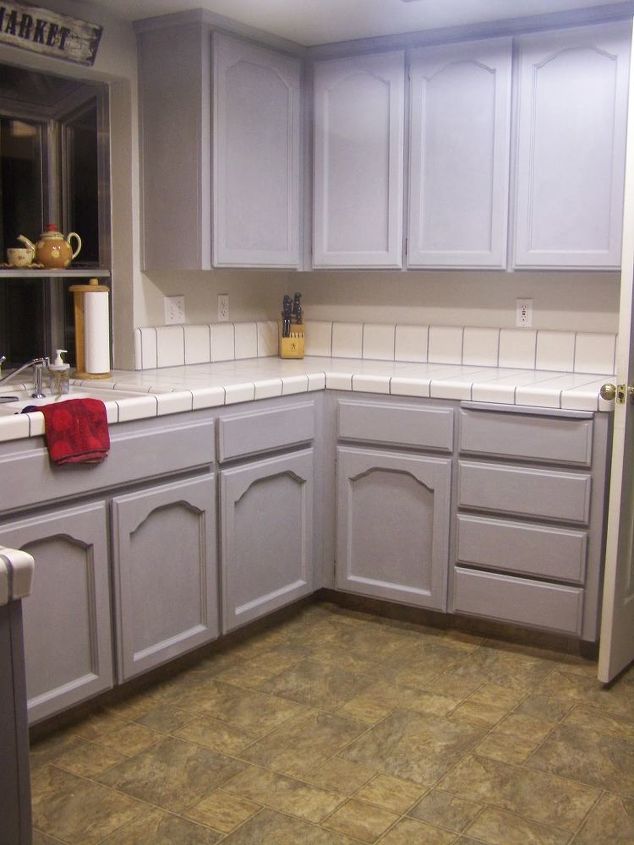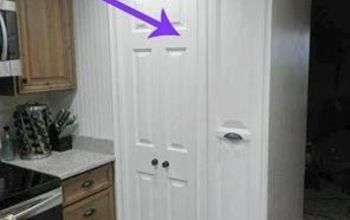Polycrylic finish becoming tacky

Has anyone else had this problem? It's almost as if the finish has worn away. When Spring gets here, I think I'll sand the top again, stain it, and seal with polyurethane - like I always did before.
Any wisdom?
No pics because there's nothing to see. You just feel it!
Related Discussions
Should I paint or stain my oak kitchen cabinets?
I was wondering if you could help me with something -- I have an entirely oak kitchen. I know it's the rage now to paint or gel stain cabinets. I've been considering ... See more
How to paint a metal front door?
How do I paint my front door? It's metal.
How to paint grout?
How do I paint grout to change the color? The grout is in great shape, but the color - meh.
How to whitewash a brick fireplace?
What is the best method to whitewash bricks surrounding a fireplace?
Should I re-stain or paint my cabinets?
Edit:””” 3 years later😂 I decided to paint them white and I am so very pleased with the results!We bought a new house with these ugly cabinets. I really cann... See more
Stripping off A LOT of chalk paint
I've had my first (of many, I'm sure) disastrous DIY project. I have covered my entire kitchen cabinetry with chalk paint and I hate it. It's streaky, it's cracking, ... See more





Ann, what did you end up doing to correct this? I'm having the exact same issue, and not very happy about it at all! I re-did the kitchen table (stained top, chalk paint base) and same with the chairs, and all of them are becoming tacky in areas of a lot of use. It's awful, and killing me to think that I will have to re-strip/re-do.
Hi Sarah! I ended up sanding off the old finish and refinishing the entire tabletop. This time, I used polyurethane, not polycrylic. It was more work than I wanted to do, but it HAD to be done. I feel your pain...Here's my post about it:
https://theapplestreetcottage.blogspot.com/2016/06/no-more-polycrylic-for-my-tables.html
http://www.thesawguy.com/polycrylic-vs-polyurethane/
https://www.reddit.com/r/woodworking/comments/27c0nn/minwax_polycrylic_sticky_after_drying/
https://www.infarrantlycreative.net/ask-experts/
Sarah, the furniture in question is now gone, but I have been using indoor/outdoor spar urethane on other applications as a substitute. So far, so good. I've stayed away from the polyacrylic. I liked the idea of using shellac, and did use it on another table, until one of my cats peed on the table and the pee ate the shellac away (bet that's not on the label). As for correcting a piece already done in polyacrylic, I would suggest sanding it off and using something else better suited to use of the piece and whether or not you have peeing cats.